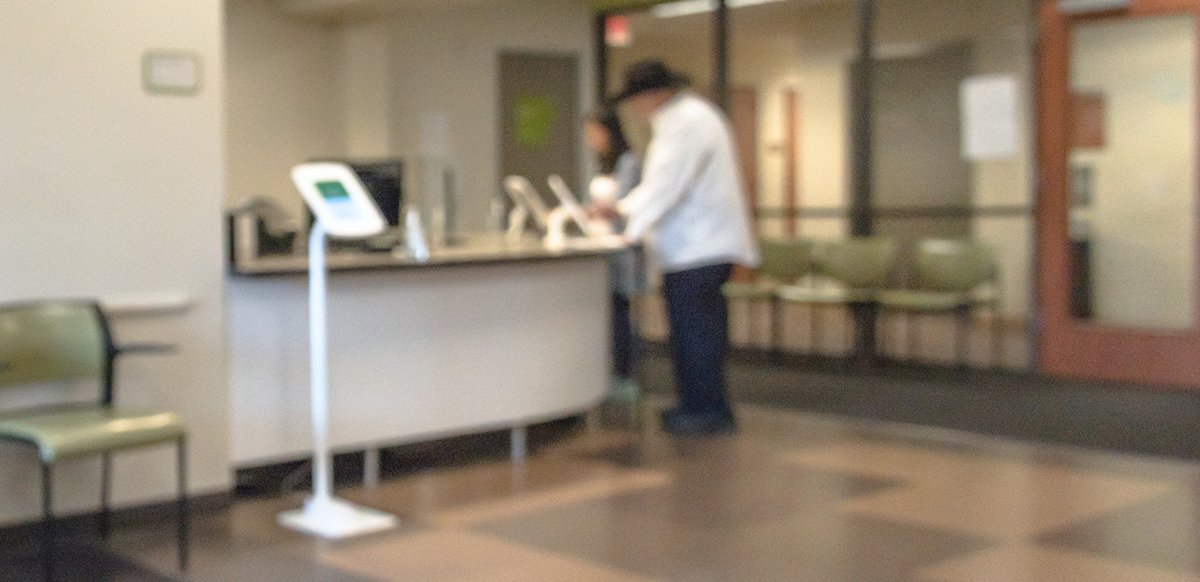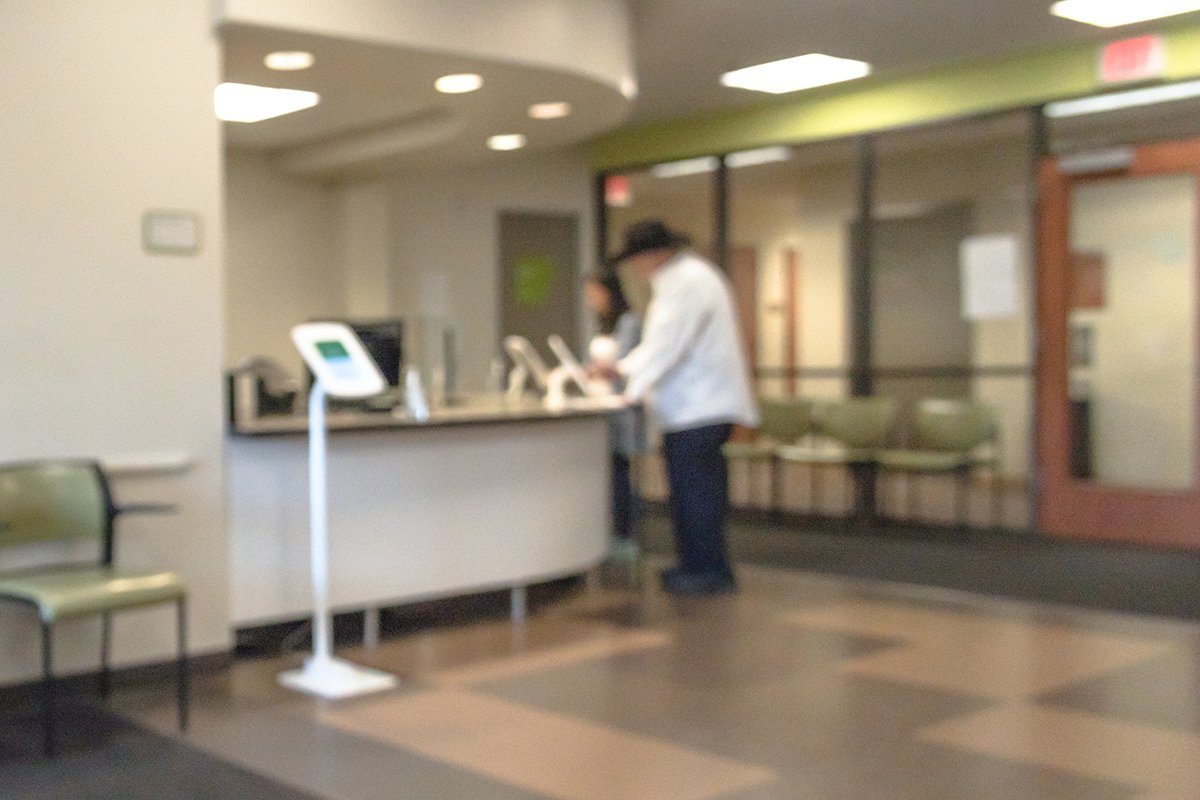
More medical professionals are changing how they approach the waiting room patient experience, turning the dull space with old magazines into a calming and peaceful room that is entertaining and informative.
One step many office managers are considering is the addition of digital patient check-in systems. Instead of needing to check-in at the front desk, patients sign-in on their own and only use the front desk when they need something specific. This check-in option is growing increasingly popular as patients and their families become more comfortable with technology.
Here are a few reasons why you should consider implementing this check-in model and how you can take the first steps to streamline your office operations.
Why Should You Invest in a Digital Patient Check-In System?
There are several benefits to installing a digital patient check-in system, both for your patients and your staff. When you consider the time you save and the ease of use for your team, opting for this check-in model is a no-brainer.
1. Improve the Patient Experience
With your current system, patients walk into your office, try to get the attention of your staff, and then fill out several pages of paperwork before they are called in. If your team is busy or on the phone, they grow impatient and wonder what’s going on. If there are multiple people waiting, they can get even more frustrated.
With digital check-in, patients enter your office, find a seat, and start checking-in. Patient experience improves, there is less stress for waiting patients, and the whole operation moves smoothly.
2. Reduce the Work Burden from Your Office Staff
When your staff relies on a manual check-in process, your office employees are constantly interrupted throughout the day. They have to juggle employee records, phone calls, paperwork, and other tasks with patient relations. Often, they have to stop what they’re doing every few minutes to hand out check-in paperwork and give patient instructions. These minutes add up.
With digital check-in, the number of interruptions on your team will drop significantly. They can get more done and have more attention for the patients who need it the most.
3. Make Record Sharing Easier
If you have switched over to universal digital records, you can share patient information within a matter of minutes. This is invaluable to doctors who send patients to other professionals as referrals or to medical professionals who need to send records when patients move away. What used to take several days or weeks as records traveled by mail now takes a few minutes.
At the very least, digital check-in makes it easier to share your records across the office, from the waiting room to the patient exam room. You never have to worry about tracking down the right files and updating them in an organized manner. Now your team can pull up the records from the computer, and save time having to compare the information on two sources.
4. Increase Patient Portal Adoption
If you’re struggling to get patients to sign up for and use your patient portal, a digital check-in process can change that. A digital check-in engages patients and gets them to use your patient portal for the first time. Once patients login and see what they can do within the portal, they may be more likely to use it at other time.
Patient portal adoption is good for your office as it makes your patients better informed and engaged with their healthcare. It’s also good for your patients as more engaged and informed patients often have been healthcare outcomes.
How Can You Add Digital Check-In to Your Practice?
Now that you see the benefits of adding this technology, you can start to take steps to implement it into your medical practice. Don’t worry, this doesn’t have to be complex or require your whole office to dramatically change its operations.
Get The Right Tools for the Job
You have multiple options to choose from when investing in a digital check-in system. Some companies set up desktop computer stations for each visitor to use. Others use digital signage and free-standing touchscreen kiosks that patients use right when they walk through the door. You can even hand out iPads for patients to use while they wait.
Consider what is right for your office and your budget before you invest in the technology you need.
Make Sure the Check-In Process Is Easy and Private
Some medical offices use fingerprint scanners to check patients in because it guarantees privacy — especially with medical records — and only takes a matter of seconds. Others set up computer stations with privacy barriers or use iPads with blackout screens.
Your patients trust you to keep their information safe, so make sure they feel secure using your digital check-in process.
Slowly Roll Out the Check-In Process
You don’t have to move all of your patients to the digital check-in process overnight. Start by asking patients if they want to check-in by hand or online or by directing new patients to the updated system. You may be surprised by how many people are willing to try something new or embrace digital check-in.
Within a year, the vast majority of your patients should be using the digital check-in process. This gives your 12 months to train your patients and make it easy for them to adopt the system.
It’s Okay to Make Exceptions for Some Patients
Not all patients will be able to use your digital model. It’s okay if you work with patients with limited digital know-how or special needs who can’t use the check-in process. Keep alternatives for those who need to check-in manually, or have a member of your staff walk people through the process.
Take the First Steps Today
If you’re considering adding a digital patient check-in system to your office and need some guidance on the type of budget you need, the resources to invest in, and the maintenance required, we can help.
Contact Spectrio today or check out our healthcare resource center to get even more guides and tips for improving patient experience in your healthcare office.
